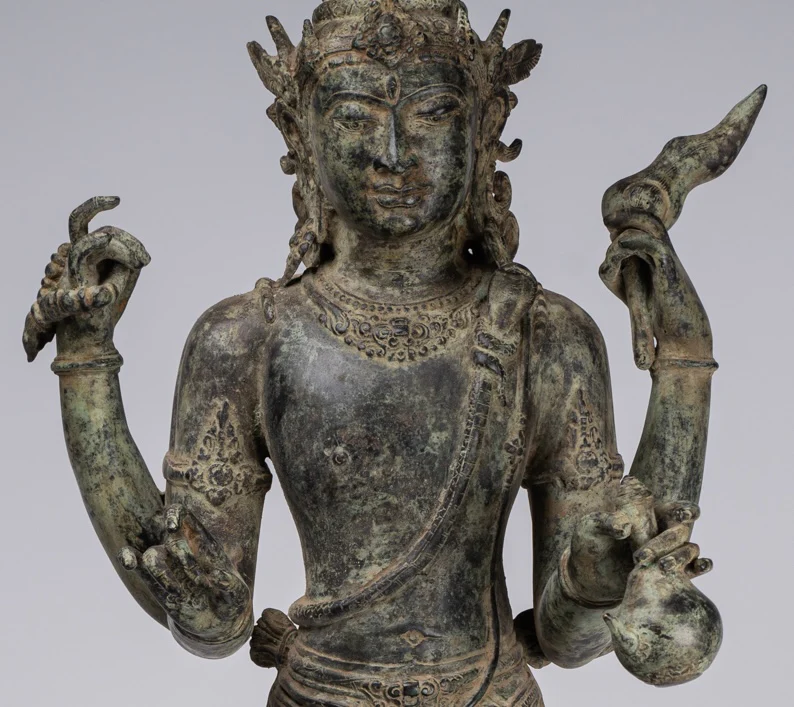
The Enigmatic Symbolism of Shiva: Unveiling the Depths of a Divine Statue
Introduction
In the vast and intricate tapestry of Hinduism, Lord Shiva emerges as a central figure, embodying the dynamic forces of creation and destruction. A statue of Shiva is not merely a sculpted form; it is a profound representation of cosmic energies and spiritual symbolism.
In this blog post, we will unravel the layers of meaning encapsulated in a statue of Shiva, exploring the divine attributes and mystical significance that make Shiva a revered and enigmatic deity.
-
The Third Eye: One of the most striking features of a Shiva statue is the third eye, known as the "eye of wisdom" or the "inner eye." Symbolically, the third eye represents heightened perception beyond ordinary sight. It signifies the transcendence of duality and the ability to see the truth beyond the illusions of the material world.
-
The Crescent Moon: Adorning Shiva's matted locks is a crescent moon, a symbol associated with the passing of time and the cyclical nature of creation. The moon represents the calming influence of consciousness, and its phases mirror the eternal dance of creation and destruction that Shiva presides over.
-
The Serpent: Lord Shiva is often depicted with a serpent coiled around his neck, symbolizing the subjugation of ego and desire. The serpent also represents the kundalini energy, which, when awakened, leads to spiritual awakening and enlightenment.
-
The Trident (Trishul): Shiva's trident symbolizes the three fundamental aspects of existence—creation, preservation, and destruction. It is a potent emblem of cosmic balance and the dynamic interplay of forces that sustain the universe. The trident also represents Shiva's authority over the three gunas (qualities) of nature—sattva, rajas, and tamas.
-
Damaru (Drum): In one of Shiva's hands, a small drum, known as a damaru, is often depicted. The rhythmic beats of the damaru represent the primal sound of creation, symbolizing the continuous cosmic vibrations that give rise to the universe.
-
Ash smeared on the body: Shiva is often depicted with ash smeared on his body, signifying the transient nature of life and the inevitability of death. It also serves as a reminder of the impermanence of material pursuits and the ultimate reality that lies beyond the physical realm.
-
The Ganges River: Flowing from the matted locks of Shiva is the sacred Ganges River. This representation symbolizes the purifying and life-giving aspects of water. The Ganges is considered a sacred river in Hinduism, and its depiction on Shiva's head emphasizes the divine connection between the deity and the sacred river.
-
Nataraja - The Cosmic Dancer: In some forms, Shiva is portrayed as Nataraja, the cosmic dancer. The dance of Nataraja symbolizes the eternal rhythm of creation and destruction. The cosmic dance is a potent representation of the cyclical nature of existence and the divine choreography that governs the cosmos.
Conclusion
A statue of Shiva is a gateway to the divine, a visual ode to the cosmic forces that govern the universe. From the third eye to the crescent moon, each element of a Shiva statue carries profound symbolism, inviting devotees to contemplate the mysteries of existence and the transcendent nature of the divine.
As one gazes upon the enigmatic form of Shiva, it becomes a conduit to spiritual contemplation and a reminder of the eternal dance of creation and destruction that defines the cosmic order.


